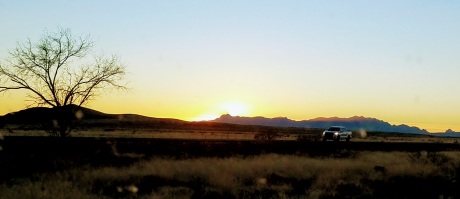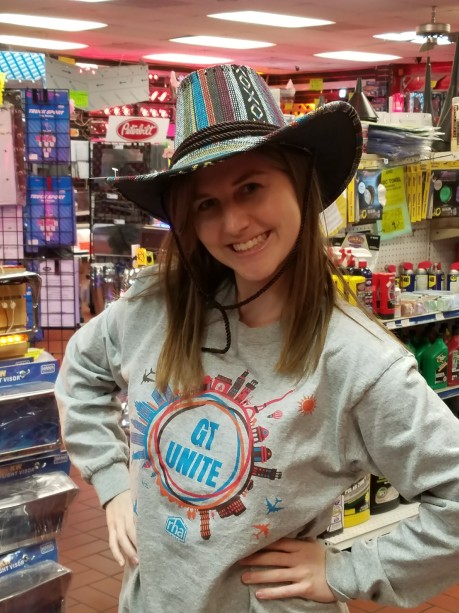Close to the Ground January 11, 2018
Posted by markgeil in Posts written while inspired by air travel, Travel.Tags: arizona, california, Joshua Tree, louisiana, mississippi, new mexico, Road trip, texas
add a comment
A little less altitude makes a whole lot of difference.
That was my thought as I sat in seat 26F, looking out the window and listening to the toddler behind me debate with her mother whether we were on a boat or an airplane. It was indeed an airplane (“AIRPANE!” she squealed with delight in the highest of pitches) flying from LAX to Atlanta. What made this flight a little different for me was not just that it was a one-way ticket, but also that I had driven the route just days before.
Hannah and I made the long journey from home to her new Los Angeles internship so that she could have a car for the six months she’d be out on the west coast. I said goodbye early that morning, whispering a prayer for her as she starts her new adventure in the working world of cardiac engineering. That early start had me drowsy, and I leaned my head against the window, eyes opening and closing on the landscape far below. I saw brown earth, jagged hills, irrigated pac-man circles of farmland, and, if I looked carefully, small roads carved though big fields leading to houses miles from their nearest neighbors. The blanket of the American southwest spread beneath me was beautiful, but a bit repetitive, and I fell asleep.
A short time later, I woke up, still hearing AIRPANE! and still looking at the same scene below. I felt detached. It was a sharp contrast from my sense during the drive, of not only witnessing but, in a small way, participating in the country far below. A little less altitude had made a whole lot of difference. I remembered the scenes from the week before.
Somewhere in Mississippi, we saw a sign for a town called Chunky. Just down the road, we crossed over the Chunky River. Hannah and I giggled, wondering what could cause a river to be named Chunky. Apparently, as of the 2010 census, Chunky, Mississippi had a population of 326 people. The town’s Wikipedia page states, “For the youth, there is a baseball field.”
Somewhere in Louisiana, suppertime was nearing, and our ten-gallon tank was almost empty. I startled Hannah by shouting, “Whataburger!” It’s a chain we don’t have in Atlanta, and as soon as I saw the name on the blue “FOOD” sign before the exit ramp I insisted we stop. “Can I help y’all?” said the young lady behind the counter. I smiled and told her we’d need a little time, as the menu was unfamiliar. (Well, unfamiliar as far as fast food goes. It wasn’t like it was in Italian or anything.) I smiled bigger when she said, “Y’all take y’all’s time.” Her accent sounded like it had been faked by a Hollywood actor for a role set in the deep south. No, I was reminded, belying my heritage, accents like that really do exist, and when they’re genuine, they’re delightful.
Somewhere in west Texas, we looked toward the left, wondering if that land just beyond the hills was Mexico. It sure looked that way on our GPS.

We passed ramshackle houses on the right, just a few yards from I-10, with collections of rusted auto body parts in yards that had never hosted a single blade of grass. I wondered what brought these families here. Were they immigrants, from that opposite side of the highway? Were they farmers, working on someone else’s farm? I wondered if their children had dreams of one day finally breaking free of that no-good town, like they do in all the movies and Bruce Springsteen songs.
Somewhere in New Mexico, we continued our new habit of choosing the most inconvenient exits available. The exit ramps were sometimes half a mile before the actual cross-street, so we’d see the good restaurants and gas stations after we’d had the chance to exit. With towns spread so far apart, there is a real possibility of running out of gas, so we had to pull off at that town’s last exit, regardless of what was there. We missed a turn, went a mile out of our way, and finally landed at one of those gas stations meant for semi trucks. A sign above the door where the bathrooms would normally be read, “Showers only.” Feeling clean enough, I wandered the place, looking for the bathrooms. If I ever own a truck, I’m going back there. It was a neon-and-chrome paradise, with enough shiny fenders and rope lights to trick out your semi like Vegas.

I greeted the man at the cash register. His perfectly shaped handlebar mustache did not move, did not even twitch on his leather skin, as he spoke. I bought a super-sweet raspberry iced tea, mainly so I would have more time to stare at his mustache.
Somewhere in Arizona, I told Hannah that, since we were taking a more southerly route, we’d stand a good chance of seeing even bigger Saguaro cacti than we had when we traveled from Phoenix to the Grand Canyon years before. Sure enough, as we neared Tucson we saw those desert giants standing watch over the parched land. I mentioned that I’d always wanted a picture beside one, and Hannah took it upon herself to make it happen. We stopped a rest area, but couldn’t find a cactus photo opportunity, though we did enjoy the friendly sign that said, “Poisonous snakes and insects inhabit the area.” At the next rest stop, we found one, just outside the wire fences that line all the highways. To get to it, we had to hike a bit back up the interstate, and I noticed footprints in the dirt ahead of us. We weren’t the only ones who went out of our way to stand among the giants.

By my reckoning, the cactus that towered over me in my photo was 20 feet, 9 inches tall. I’ve read that they grow to over 40 feet. Sure, the Georgia pines in our own back yard are much taller, but out there in the dessert, in that big sky, standing all alone, that cactus felt like the biggest thing I’d ever seen.
Somewhere in California, we witnessed valleys dotted with other giants: majestic three-bladed windmills, moved by an invisible force to dance a slow and silent waltz. We pulled off the highway at the brown sign directing us to Joshua Tree National Park, and I turned up the radio so we could here every perfect opening note in “Where the Streets Have No Name.” 
Inside the park, we visited the Cholla cactus garden, with the so-called “jumping cactus,” since it so readily attaches itself to passers-by. I tried not to laugh at the little boy with the tear-streaked puffy cheeks, holding his index finger aloft. He’d been either too careless or too curious. Knowing myself at his age, he probably just couldn’t stand not touching at least one. Later, we passed into the Mojave Desert, and into a canyon of Joshua Trees. I chose my favorite, donned a black jacket, turned up the collar, and looked down and to my right, all sultry like Bono. Hannah took my picture. I added a black-and-white filter. And so I paid my respects to my favorite album, and to the land that wrought it.

Granted, one cannot know a land and her people from the interstate. Hannah and I were just observers, taking in the breadth of this country one exit at a time. But in that view from an airplane window 30,000 feet in the sky, I realized that the proximity of the drive let me appreciate those jagged hills and tiny farm houses in a new way. Each tells a story, and I could understand them a little better. Surely God had this thought, at least for a moment, when he sent Jesus to walk this earth: it is sometimes very important to be close to the ground.
I had one more thought in seat 26F before I closed my eyes again. I’d like to do that again sometime, that long drive, only more slowly. I’d like to visit that one baseball field in Chunky, Mississippi, and play a little catch. I’d like to hear the history of the mustachioed man in the truck stop. I have a feeling he’d be eager to tell it. I’d like to pitch a tent for a night in Joshua Tree. I imagine the stars must be extraordinary. “There’s so much beauty around us for just two eyes to see. But everywhere I go, I’m looking.”